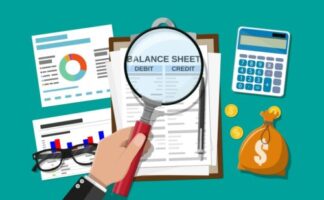FISCAL POLICY AND ITS ROLE IN STABILIZING THE ECONOMY
Introduction
Fiscal policy refers to the government’s use of taxing and spending to influence the economy’s overall health and stability. It is one of the essential tools at the disposal of policymakers to address economic fluctuations, recessions, and inflationary pressures. By adjusting taxation and government spending levels, fiscal policy aims to achieve economic stability, full employment, and sustainable growth. In this article, we will explore the role of fiscal policy in stabilizing the economy.
Understanding Fiscal Policy
Fiscal policy primarily revolves around two key components: government spending and taxation. When the economy is experiencing a downturn, such as a recession, the government can use expansionary fiscal policy to boost economic activity and stimulate growth. This is achieved by increasing government spending on infrastructure projects, social programs, and other initiatives that create jobs and inject money into the economy.
On the other hand, during periods of strong economic growth and potential inflation, policymakers may adopt contractionary fiscal policy. This involves reducing government spending and increasing taxes to cool down the economy and prevent excessive inflation.
The Countercyclical Nature of Fiscal Policy
One of the critical features of fiscal policy is its countercyclical nature, meaning it moves in the opposite direction of the business cycle. During recessions, when private sector activity and consumer spending decline, the government can step in to fill the gap and stimulate demand. By doing so, fiscal policy helps prevent a deeper and prolonged economic downturn by boosting aggregate demand.
In times of economic boom, the government can use fiscal policy to control excessive growth and prevent overheating, which could lead to runaway inflation and asset bubbles. By reducing spending and increasing taxes, the government can reduce aggregate demand and keep the economy in check.
Fiscal Policy Tools
Fiscal policy employs various tools to achieve its objectives. These tools include:
- Government Spending: The government can increase spending on public infrastructure projects, healthcare, education, and social welfare programs. Increased government expenditure directly creates jobs, fosters economic activity, and stimulates growth.
- Taxation: Fiscal policy can influence the economy by adjusting tax rates. In expansionary periods, tax cuts can put more money in the hands of consumers and businesses, boosting spending and investment. Conversely, during inflationary periods, tax hikes can reduce consumer spending and cool down the economy.
- Transfer Payments: Governments can use transfer payments, such as unemployment benefits and welfare programs, to support citizens during economic downturns and maintain a basic level of consumer spending.
Challenges and Limitations
While fiscal policy can be a powerful tool for stabilizing the economy, it is not without its challenges and limitations. One major challenge is the time lag between implementing fiscal measures and their actual impact on the economy. The legislative process and bureaucratic procedures can cause delays in enacting fiscal changes, potentially reducing their effectiveness.
Moreover, fiscal policy can lead to budget deficits when the government spends more than it collects in taxes. Accumulating large deficits can create a burden on future generations, making it crucial for policymakers to exercise fiscal responsibility.
Conclusion
Fiscal policy plays a vital role in stabilizing the economy by responding to fluctuations in economic activity. By adjusting government spending and taxation, policymakers can influence aggregate demand and maintain economic stability. However, it is essential to strike a balance and use fiscal policy responsibly to avoid unsustainable deficits while achieving the desired economic outcomes. With careful planning and implementation, fiscal policy can continue to be a valuable tool in promoting sustainable growth and prosperity.


